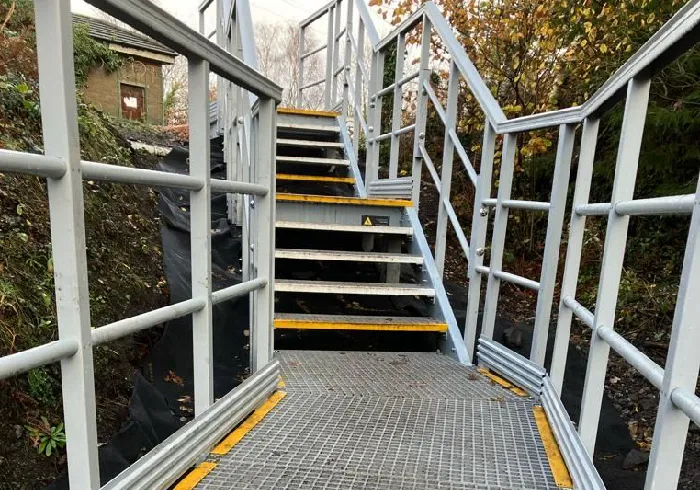loading...
- No. 9, Xingyuan South Street, Dongwaihuan Road, Zaoqiang County, Hengshui, Hebei, China
- admin@zjcomposites.com
- +86 15097380338
- Welcome to visit our website!
fibreglass reinforced plastic grating
Fibreglass Reinforced Plastic Grating A Comprehensive Overview
Fibreglass Reinforced Plastic (FRP) grating is an innovative material that has gained significant popularity in various industrial applications due to its unique properties and advantages over traditional materials. Made from a combination of fibreglass and a polymer resin, FRP grating is renowned for its strength, durability, and corrosion resistance, making it an ideal choice for numerous environments. In this article, we will explore the characteristics, benefits, and applications of FRP grating.
Characteristics of FRP Grating
FRP grating is characterized by a reinforced composite structure that combines the lightweight nature of plastic with the tensile strength of fibreglass. This combination allows it to withstand heavy loads while remaining easy to handle and install. The manufacturing process involves the pultrusion or molding of fibreglass roving coated in resin, resulting in a final product that can be customized to meet specific requirements.
Additionally, FRP grating is available in various styles, including molded, pultruded, and custom designs. It can also be fabricated in different dimensions, thicknesses, and mesh patterns to suit the needs of specific applications. The versatility of FRP grating makes it adaptable to different settings, from industrial facilities to commercial buildings.
Key Benefits of FRP Grating
1. Corrosion Resistance One of the most significant advantages of FRP grating is its exceptional resistance to corrosion and chemical damage. Unlike metal grating, which can rust and deteriorate when exposed to harsh environments, FRP maintains its structural integrity even in highly corrosive conditions, making it ideal for use in wastewater treatment plants, chemical plants, and marine applications.
2. Lightweight The lightweight nature of FRP grating facilitates easy transportation and installation. This attribute not only reduces labor costs but also minimizes the requirement for heavy machinery during installation. Workers can handle FRP panels with ease, making it a practical option for various projects.
3. Non-slip Surface Safety is a critical consideration in any industrial environment. FRP grating can be designed with a non-slip surface, providing excellent traction even in wet or oily conditions. This feature significantly reduces the risk of slipping accidents, contributing to a safer workplace.
4. Thermal Insulation FRP grating offers good thermal insulation, making it comfortable to walk on in extreme temperatures. Unlike metal grating, which can become hot and uncomfortable in the sun or cold in low temperatures, FRP remains at a more stable temperature, enhancing user comfort.
fibreglass reinforced plastic grating

5. Low Maintenance Requirements With its inherent durability and resistance to degradation, FRP grating requires minimal maintenance compared to traditional materials. No painting, rust prevention, or regular upkeep is needed, making it a cost-effective solution over the long term.
Applications of FRP Grating
FRP grating is utilized across a wide range of industries due to its robust properties and adaptability. Some common applications include
- Chemical Processing Given its high resistance to a variety of chemicals, FRP grating is extensively used in the chemical industry for walkways, platforms, and containment areas.
- Wastewater Treatment In wastewater treatment facilities, FRP grating is employed for walkways, covers, and support structures where corrosion is prevalent.
- Pulp and Paper Industry The pulp and paper manufacturing process often involves corrosive conditions, making FRP an ideal material for flooring and access platforms.
- Oil and Gas The oil and gas industry frequently utilizes FRP grating in refineries, offshore platforms, and other environments where safety and durability are paramount.
- Recreational Areas Beyond industrial uses, FRP grating is also found in recreational areas such as parks and boardwalks, benefiting from its aesthetic versatility and non-slip properties.
Conclusion
In summary, fibreglass reinforced plastic grating is a highly effective and reliable solution for various industrial and commercial applications. Its unique combination of strength, corrosion resistance, lightweight nature, and low maintenance needs makes it a superior alternative to traditional materials. As industries continue to face challenges related to safety, durability, and environmental factors, the use of FRP grating is likely to expand, making it an essential material for the future.
-
The Rise of FRP Profiles: Strong, Lightweight, and Built to LastNewsJul.14,2025
-
SMC Panel Tanks: A Modern Water Storage Solution for All EnvironmentsNewsJul.14,2025
-
GRP Grating: A Modern Solution for Safe and Durable Access SystemsNewsJul.14,2025
-
Galvanized Steel Water Tanks: Durable, Reliable, and Ready for UseNewsJul.14,2025
-
FRP Mini Mesh Grating: The Safer, Smarter Flooring SolutionNewsJul.14,2025
-
Exploring FRP Vessels: Durable Solutions for Modern Fluid HandlingNewsJul.14,2025
-
GRP Structures: The Future of Lightweight, High-Performance EngineeringNewsJun.20,2025
